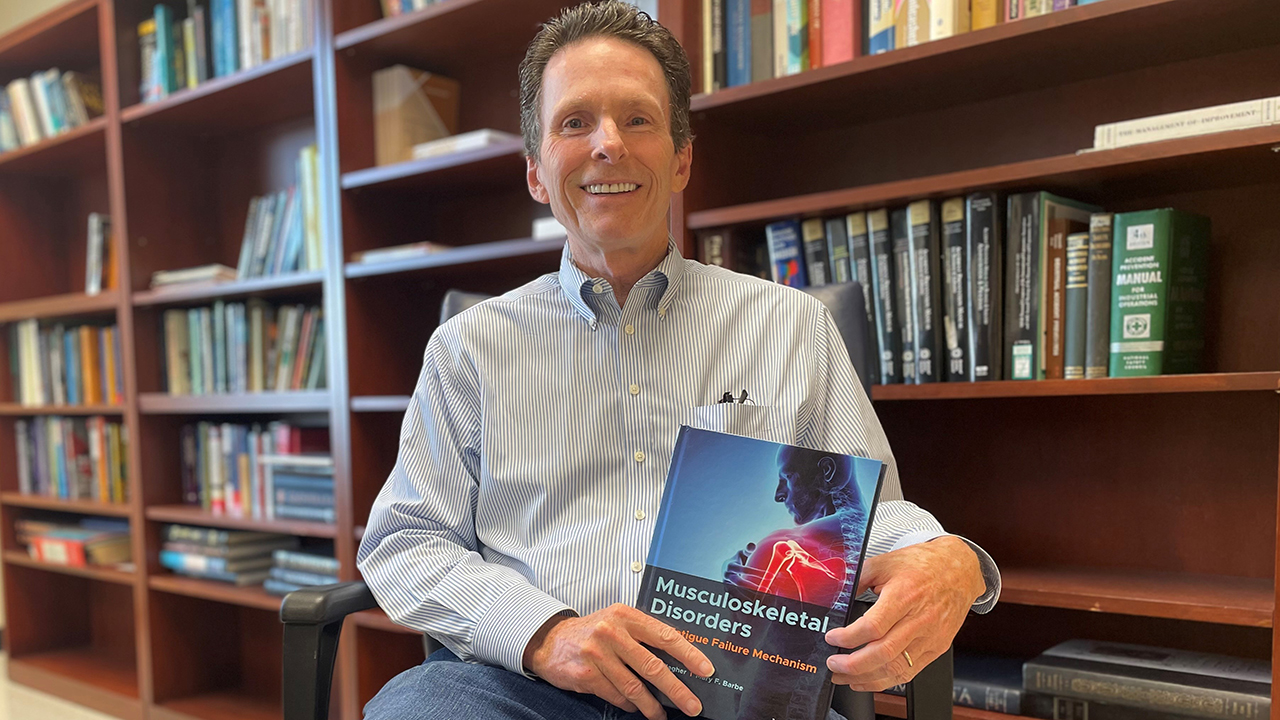ISE professor explores musculoskeletal disorders in new book
Published: Aug 1, 2022 9:45 AM
By Carla Nelson
Work-related musculoskeletal disorders (MSDs), such as low back pain and carpal tunnel syndrome, are a major cause of pain and disability to many workers and constitute a multi-billion-dollar a year problem for manufacturers and employers across the globe. In an effort to help others better understand these musculoskeletal disorders and why they occur, Sean Gallagher, the Hal N. and Peggy S. Pennington Professor in the Auburn University Department of Industrial and Systems Engineering, has written a new book entitled “Musculoskeletal Disorders: The Fatigue Failure Mechanism.”
The book, co-authored by Mary F. Barbe, a professor in the Temple University Lewis Katz School of Medicine, is an incisive discussion of how musculoskeletal disorders (MSDs) develop and progress, as well as how they can be prevented and controlled. The book provides evidence, based on an international award-winning paper by Gallagher, that fatigue failure does occur in musculoskeletal tissues and discusses important insights regarding the proposed mechanism.
Fatigue failure is the process by which physical damage accumulates in a material exposed repeatedly to stress. Normally, fatigue failure techniques have been used to explain damage development and failure in inert structures ranging from paper clips to bridges. However, the musculoskeletal system is also made of materials exposed to significant repeated stress and such exposures would also be likely to lead to damage development in musculoskeletal tissues.
In the book, the authors identify new risk assessment approaches based on the cumulative effects of exposure to highly variable loading conditions. These new approaches can also be applied to evaluate the efficacy of job rotation scenarios and to quantify exoskeleton efficacy. The complexities associated with fatigue failure in biological environments are also explored in addition to suggested models for understanding how the body maintains musculoskeletal homeostasis.
“A great deal of research has been devoted to this issue; however, identification of a specific mechanism through which these injuries develop has been lacking,” Gallagher said. “That is, exactly how and why do these injuries occur?”
Gallagher, who focuses on the mechanical aspects of the body in the book, and Barbe, who focuses on the biological processes of the body, have collaborated on research papers in the past.
“We put our knowledge together to get a better understanding of what’s actually happening with these injuries,” Gallagher said.
A unique aspect of musculoskeletal tissues discussed in the book is that unlike common materials, these materials possess the ability to self-heal. The book provides a model of the balance between damage accumulation and healing, and discusses factors that are important in the maintenance of musculoskeletal health.
The book also provides up-to-date information on the epidemiology of MSDs, the structure and function of the musculoskeletal and nervous systems, as well as several unique aspects of musculoskeletal tissues, such as the capacity of these tissues to self-heal. The impact of personal characteristics on MSD risk and implications for MSD prevention and optimization of musculoskeletal health is also discussed.
The book is a useful guide to anyone interested in learning more about MSDs, including occupational and environmental health and safety professionals, physical therapists and occupational physicians.
“We hope that readers will find this book useful in understanding and controlling the incidence and costs associated with MSDs,” Gallagher said.
Media Contact: , cmn0023@auburn.edu, 844-844-1404
Sean Gallagher, the Hal N. and Peggy S. Pennington Professor in the Auburn University Department of Industrial and Systems Engineering, has written a new book entitled “Musculoskeletal Disorders: The Fatigue Failure Mechanism.”


